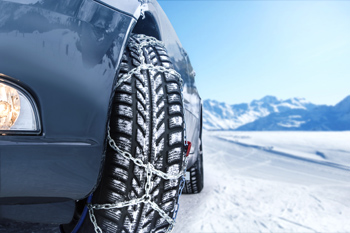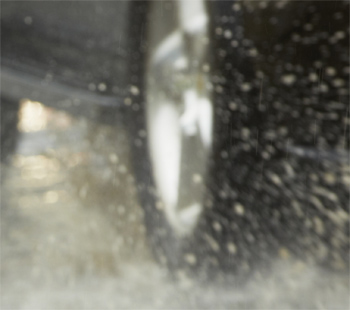
Friction is the force that resists motion between two touching and moving objects or surfaces.
In addition to slowing down or stopping movement, friction also causes the moving objects or surfaces to heat up or make sounds.
Two types of frictions:
1. Static Friction
Static Friction is created when two objects are touching or pushing against each other without sliding.
For example, when you drive, your wheels push against the pavement causing the car to move, but there is no sliding of the tires against the pavement.
When you stop, your brakes create friction inside the wheels, which slows down the wheels, meaning your tires still push against the pavement, but in slower motion rather than sudden stopping (which causes sliding).

2. Kinetic or Sliding Friction
Kinetic or Sliding Friction is created when two objects are touching and sliding against each other.
For example, if you drive on a slippery road, or stop suddenly, your tires may slide against the pavement. When your tires slide against the pavement, you will be more likely to lose control of your vehicle.
So for driving, you always want to be using static friction instead of kinetic or sliding friction.
When you drive, friction occurs between:
The following factors can affect friction as you drive:
Vehicle weight.
The heavier the vehicle, the more friction is created between your tires and the road; this means you will need more engine power to push forward, and it will be easier to stop the vehicle on a level surface road.
When your vehicle is heavy, the increased friction between the tires and road will heat up the tires. Thus, heavier vehicles will need tires that are more resistant to heat.
Braking.
When you apply your brakes, it causes the car's brake pads to touch the brake discs, which creates friction between the pads and discs; the friction causes heat and also resists the motion of the wheels and, therefore, slows down or stops your car.
Sudden Braking
If you suddenly apply your brakes, you will cause your wheels to lock and slide on the pavement (this is called losing traction and skidding).
You will not want your wheels to slide on the pavement because:
You will want your wheels to always turn on the pavement while driving or stopping because:
So, when gradually stopping, your wheels continue turning until the car comes to a full stop, which is the most efficient method, using static friction to stop the vehicle.
Anti-lock brakes prevents the wheels from locking and sliding and provide the operations of wheels turning while stopping – this way, the more efficient friction (static friction) is used to stop the vehicle; the vehicle will stop in shorter time and distance and you will have a better control of your vehicle.
Downhill Braking
If you are driving on an extended downhill stretch road (for a few minutes), you may need to shift to a lower gear to slow down your vehicle. This is because if you use your brakes consistently for a few minutes on an extended downhill, the friction created between your brake pads and brake disks (rotors) keeps generating heat, and your brake component can become too hot and lose the ability to absorb any more downhill kinetic force.
Over-inflated, worn out smooth tires or slippery road conditions
When your tires are over-inflated, your tires are worn out their treads and are smooth, or if the road is slippery due to ice, snow, rain, oil, sand or dirt, there is less gripping power between the tires and pavement and therefore, less static friction and more kinetic or sliding friction.
This creates the following problems for drivers:
Under-inflated tires
When your tires are under-inflated, there will be more static friction between your tires and the road. The increased friction will cause more heat between your tires and road and can cause more wear on your tires, and possibly tire tread separation or blowouts.